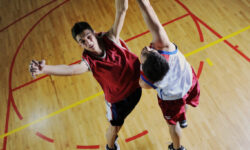
With the football season bursting into life, we thought we would investigate what it takes to be fit to play football.
With the FIFA Women’s World Cup grabbing the attention and praise of millions of people around the world, and the league season now starting across the northern hemisphere, more people than ever are taking up the beautiful game.
Ready for the new season
Whatever the level, from complete beginner to semi-pro, there are some elements of fitness that everyone can work upon.
How to train to be fit to play football
Stamina is the first thing you need to master, if you aspire to be fit to play football. The average player covers up to 10 kilometres over a 90 minute game. The distance covered during a match is a mixture of walking, running and flat-out sprinting.
To prepare for this, you either need to hit the treadmill or the roads/parks for some serious leg work. There is little point in just banging out a 10k run at one pace as that doesn’t prepare your muscles or cardiovascular system for the stress caused by running at different intensities.
The most effective way to get fit to play football is by mimicking the demands of the game in your training. And that means interval training.
Stamina Session
Do four minutes of jogging followed by four minutes of hard running. Repeat this pattern four times. If space and facilities allow, you could also mix some footwork around cones into the session too.

The next component of the modern footballer’s game is speed over a short distance. It doesn’t matter what position you play, the ability to go as fast as you can over a short distance is vital. You need speed as the winger chasing down the left-side of the field. The defender rushing across to make a tackle must be speedy. The goalkeeper coming out to intercept the ball. Speed is a key component wherever you play on the pitch.
Sprint Session
If you are training on a treadmill then 30 second sprints with a minute recovery are an easy and effective way to work on your sprinting. After a five minute warm-up, crank up the pace to 80 per cent of your maximum speed and do 10 x 30 second sprints with a minute between each one.
For shorter, sharper sprints of 5-7 seconds, it is best to train on grass or in a sports hall. This session can include a warm up of five minutes, then 15-20 short sprints, with a 30-45 second jog between each one. The session should end with a cool down jog of five minutes.
It is not just stamina and speed that will give you the edge over your opponents. Being able to gain that first metre on another player is vital. This is all down to your explosive power. This is the moment you dart away to beat the defender to the ball, or you make a run into space to receive a pass. Training for explosive power is hard but it will turn you into a player with a frightening turn of speed.
Fit to play football, its all about power
Do four sets of 10 single leg box jumps – jumping one-legged from floor onto box top. Alternate legs as you do the exercise. As you get more powerful, increase the height of the box.
Being fast and powerful is all well and good but to be fit for football, you also need to be able to change direction swiftly and adeptly. The traditional training method of using cones still holds firm at football training grounds up and down the country. Do train with the ball as being able to run and turn with the ball completely under control is a fantastic skill.
Agility Session
Slalom through 10-20 cones, placed in zig-zag formation. Keep repeating the practice increasing your speed as you improve. You can tag this onto any other football training session.
Balance and stability are key components of football fitness and will allow you to twist and turn on the field without incurring injury. The traditional method of training the core is to hammer out as many abdominal exercises as possible. That is all well and good, but do add some unstable training into the mix.
Core Strength is key
There are hundreds of exercises and workout sessions dedicate to working the core. Choose what is best for you but remember to try to include unstable exercises in your plan. For example, squat on a Bosu ball or use a T-bar for single-leg Romanian deadlifts. Anything that gets you working for balance while working the core will help your on-field performance.

For help and advice with any of these training activities, speak to one of the instructors in the Outlooks Gym or Free Weights Gym.







